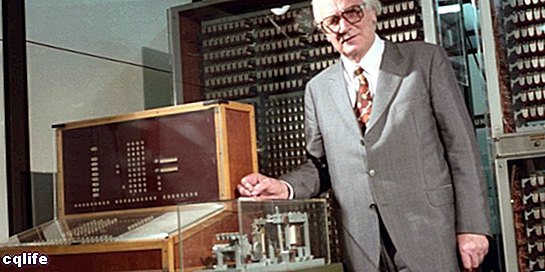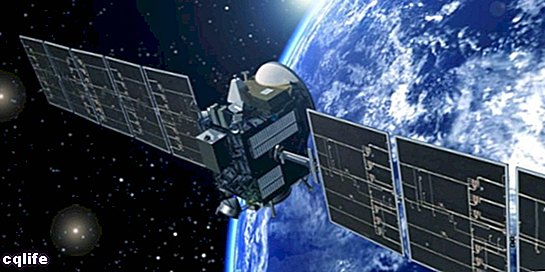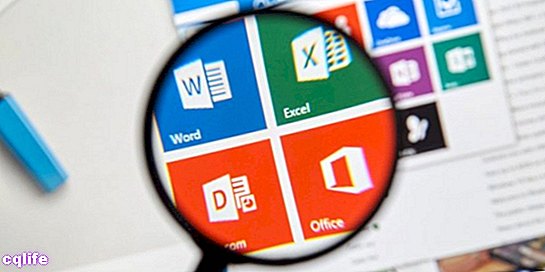- What is computing?
- Characteristics of computing
- Computer history
- What is computing for?
- Importance of computing
- Computer basics
- Computer technology
We explain what computing is, its history, what it is for and other characteristics. Also, its basics in detail.

What is computing?
Computing or computing is the science who studies the methods Y techniques to store, process and transmit information in an automated way, and more specifically, in digital format using computerized systems.
There is really no single and universal definition of what computing is, perhaps because it is one of the sciences of more recent origin, although one of more rapid and unbridled development.
That is why in many academic spaces they tend to differentiate between this discipline and computer science (or computer engineering), considering that the latter have a more theoretical approach to the subject, while computer science always has a practical and applied side, linked to electronic devices.
Others, on the other hand, consider computer science, computer engineering, information systems, information technology and computer engineering as sub-disciplines of informatics. software.
In any case, computing as a discipline has to do with the automatic processing of information through electronic devices and computer systems, the latter endowed with three basic functions: the entry of data (input), data processing and transmission of results (output).
Characteristics of computing
Informatics, broadly speaking, can be characterized as follows:
- Its object of study can be summarized in the automated processing of information through computerized digital systems.
- Both the theoretical and practical approaches to computer systems are proposed, although it is not an experimental science.
- Borrow the language formal of the logic and the math to express the relationships between data systems and the operations they perform.
- It is one of the youngest scientific disciplines, formally emerged in the second half of the 20th century.
Computer history

Contrary to popular belief, computing predates the invention of computers. It has very old antecedents in the mental calculating machines of the philosophers of the Greek Antiquity, like Euclid (c. 325-265 BC) and his famous algorithm, or in the mechanical calculators of the 17th century and the programmable machines of the 19th century.
However, in the first half of the 20th century the technology necessary to develop the first computers. Among those advances are the vacuum tube, logic gates and early circuits, which inaugurated a field of knowledge that very soon revolutionized everyone else and changed the way we think about work.
Work on algorithms was also central during the first three decades of the century, under the genius of figures such as the British mathematician Alan Turing (1912-1954). On the other hand, the context of the WWII it drove the first automatic calculators to decipher the enemy's war codes.
The first fully programmable and automatic calculating machine was invented in 1941, called Z3, and in 1944 the first electromechanical machine, at Harvard University in the United States: the Mark I.
Since then, computer systems have not stopped changing. New technologies such as transistors, semiconductors and various information storage mechanisms, from punched cards to the first magnetic tapes.
The first computer of the history it was the ENIAC, from the University of Pennsylvania, occupying a full room. It was the first of several generations of computer systems to come, getting smaller and more powerful.
The first computer schools, within the framework of universities, emerged between the 1950s and 1960s. At the same time, the nascent but powerful computer industry, which permeated all other areas of human knowledge in just 60 years of development.
What is computing for?

The key purpose of computing is the storage and retrieval of information, which has been one of the key concerns of the humanity since the beginning of time. In this sense, the first storage system was writing itself, which made it possible to encode messages and then retrieve them through marks on a surface.
Seen this way, computing has taken that same principle to the maximum, creating systems and devices that store, produce, transmit and reproduce information in a massive, efficient and fast way. It is not for nothing that computing today intervenes in practically all other fields of knowledge in one way or another.
Importance of computing
The importance of computing today could not be more apparent. In a hypertechnologized and hyperconnected world, information has become one of the world's most precious assets, and the complex computer systems we have built allow us to manage it faster and more efficiently than ever before in history.
Computing is one of the disciplines in greatest demand in the world university market. It has the largest and fastest job prospects, since almost no aspect of daily life is still on the fringes of the digital world and large information processing systems.
The big data (or "big information") that our devices gather from us is evidence of this: we really do live in the information age, and computing then could not be more important.
Computer basics

The most basic concepts of computer science are hardware and the software.
The hardware it is the physical, rigid, concrete and tangible aspect of computer systems. They are, thus, the parts and components that we can touch, exchange, break, etc., something like the "body" of the computer.
This category includes vital processing components (such as the computational processor) or storage devices (the memory and hard drives), but also peripheral devices, which are independent attachments to the system, which are connected to it to allow it to perform various functions.
Depending on what these functions are, we can talk about:
- Input devices. Those that allow information to be entered into the system, such as a keyboard, a mouse, a webcam or a scanner.
- Output devices. Those that allow the extraction or retrieval of information from the system, such as the monitor, a printer or some speakers.
- Input / output devices. Those that are capable of performing both functions at the same time or in succession, such as a multifunctional printer, or a touch monitor.
The software it would become the mind of the computer system, intangible, abstract and only accessible through the system. There are many types of software, some of which are already pre-installed in critical areas of the computer, while others serve as an interface between the system and the computers. users, governing devices, controlling resources and allowing the installation of programs children that the user wants.
Thus, we can talk about:
- Operating software or operating systems. Those programs that are needed for the minimum operation of the system and for the user to have access to its resources. These are the fundamental programs that provide the user with an operating environment and that regulate access to the physical resources of the system, such as memory, processor, etc.
- app software. Those programs that the user installs on the system later and that offer certain functions, ranging from work to leisure: video games, text processors, graphic design programs, programs antivirus, web browsers, etc.
Computer technology
Computer technology is understood to be the study, development, management and implementation of automated computer systems, especially from the software perspective.
Thus, computer technology specialists are dedicated to different areas of computerized activity, such as the design software, the establishment of computer networks, the management of computerized systems, the design of databases, etc. Its purpose is to facilitate the implementation of these technologies in business, production or organizational settings.
